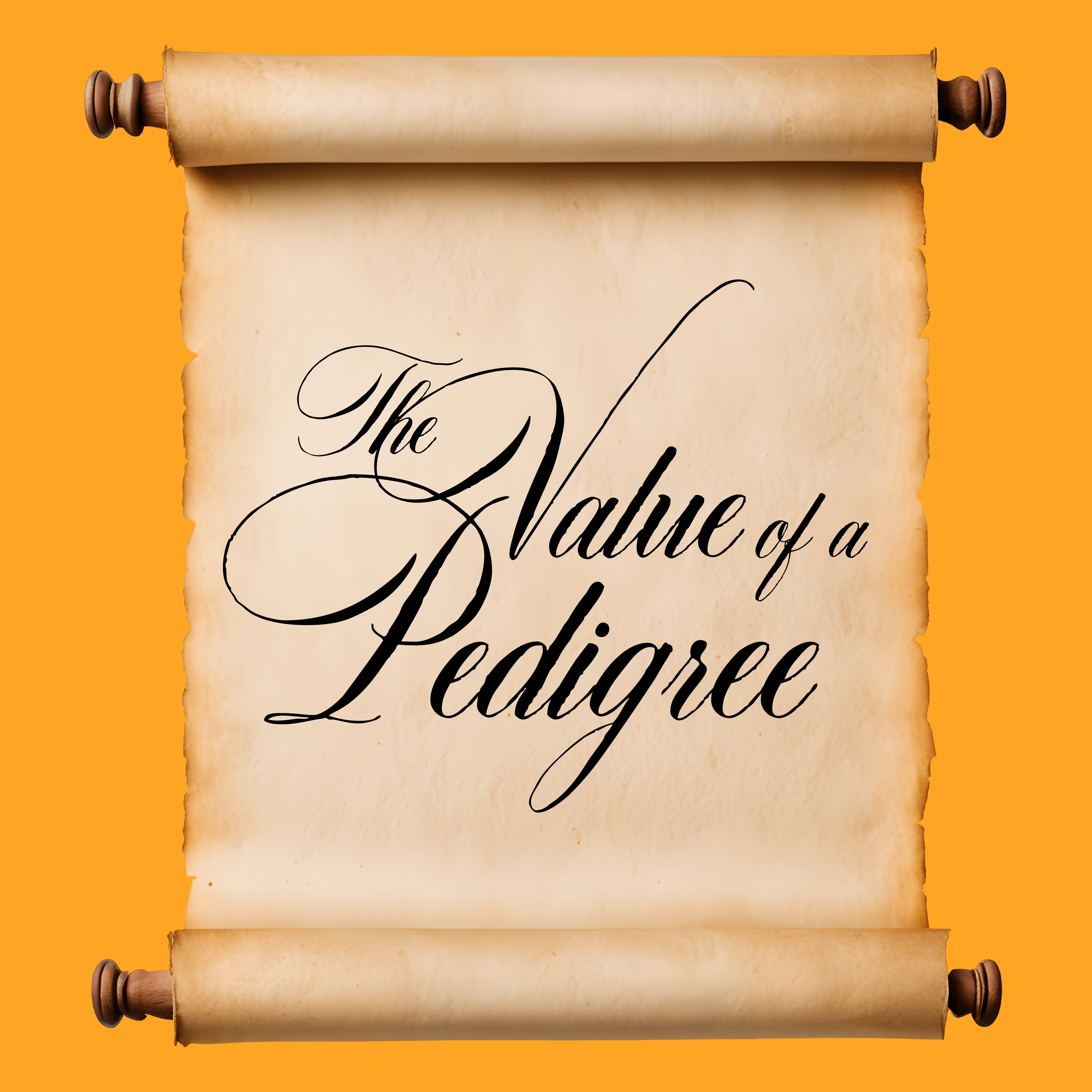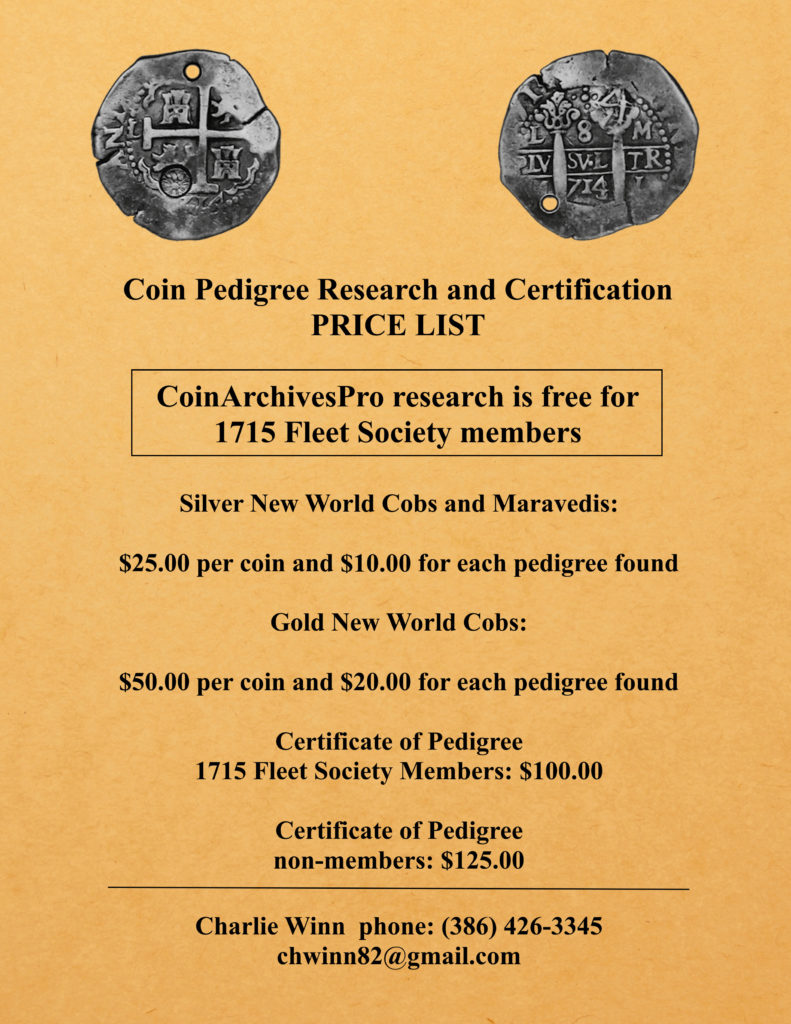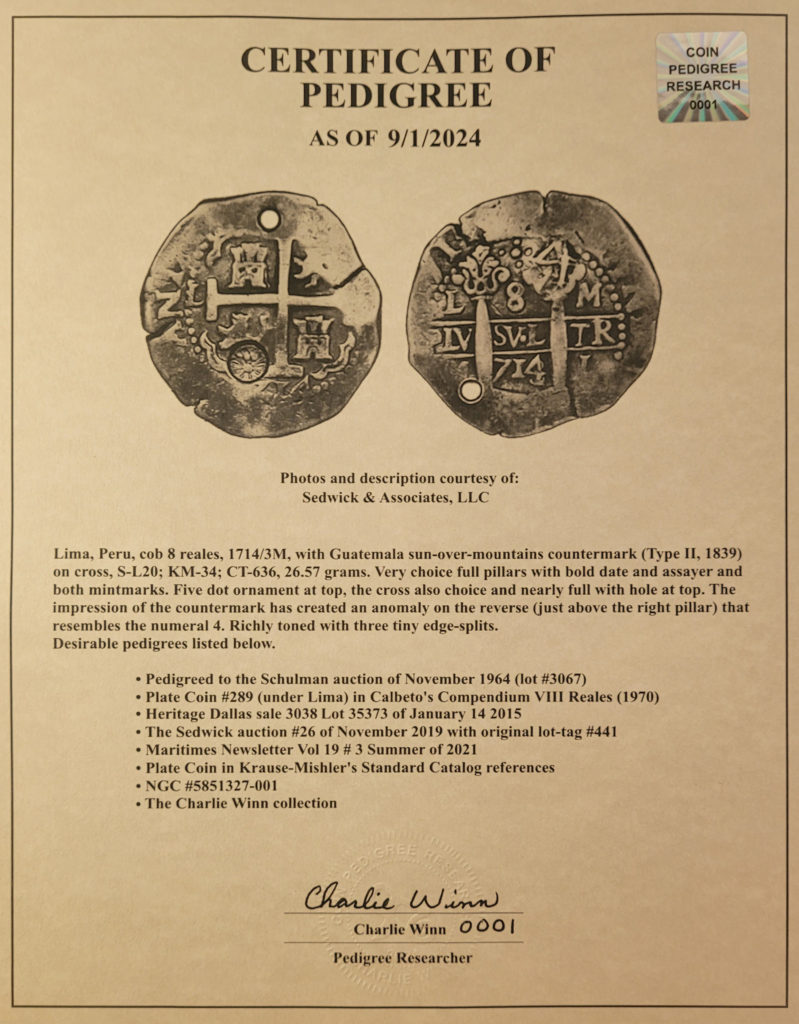According to Webster (you know, the dictionary that was used before Google came along) the word “pedigree” is defined as “A line of ancestors, descent, lineage, genealogy, or a register or record of a line of ancestors”. In the art world, the “pedigree” of an artwork is called its “provenance”. The provenance is the history of the artwork after it leaves the artist’s studio. Provenance can be established through researching the history of the artwork through exhibits or sales, particularly auctions, or other clues. Art dealers often employ individuals who make their living doing this research. And why? Because this information can establish not only where the artwork came from, but also it can enhance the value of a piece many times over. Establishing provenance is long, tough, and grueling work which often requires hours, or even days, of grinding research to arrive at a conclusion. In fact, in some instances establishing provenance can result in a dead end.
Like paintings or sculptures, coins, particularly handmade coins, or “cobs”, are tiny pieces of art that carry their own provenance or, as we like to say, “pedigree”. We who study Spanish colonial coinage from the 1715 Fleet certainly understand the value of knowing a coin’s pedigree. For collectors, a known pedigree of a coin not only enhances the collecting experience but also adds value to the coin. And like in the art world, establishing pedigree involves the same type of intense research and investigation.
A few years ago, I met Charlie Winn who had a side hobby researching 1715 Fleet coin pedigrees. At the time I was impressed with his knowledge of Fleet coin pedigree and what he was discovering about the history of some of these coins. But mostly I was impressed by the fact that no one else that I knew of was doing this type of work, at least not to the degree that Charlie was. We were so excited about the work that he was doing that we invited him to become an Advisory Board member for the Society specializing in Coin Pedigree and Provenance.
Over the ensuing years, what started out as a hobby turned into a full-time job. He has now finally established his own business which he calls “Coin Pedigree Research and Certification”. It is only fitting that Charlie established a professional service that fills a need in this industry. Now collectors can seek the services of someone who possesses a database that includes thousands of coins from hundreds of auctions. Also, it is important to know that some coins have multiple pedigrees which can increase the value of a coin even more. And most importantly for those who want it, Charlie also offers a Certificate of Pedigree. This certificate contains a serial number and hologram setting forth the coin’s pedigree which can be used as evidence of where the coin has been auctioned or sold in the past and in some cases the previous owner. Along with the Certificate of Pedigree is a separate letter with Charlie’s personal testament of the uniqueness of cob coinage and the value of reestablishing a coin’s lost identity. This letter also comes with a seal, his signature, and a corresponding hologram number that matches the Certificate of Pedigree. Below is more information about Charlie’s new venture. And, as an added bonus, you will find a list of pedigrees for coins in the upcoming Sedwick Auction 36, November 7 – 8, 2024.
Sedwick & Associates Treasure Auction 36
Pedigree Research by Charlie Winn



